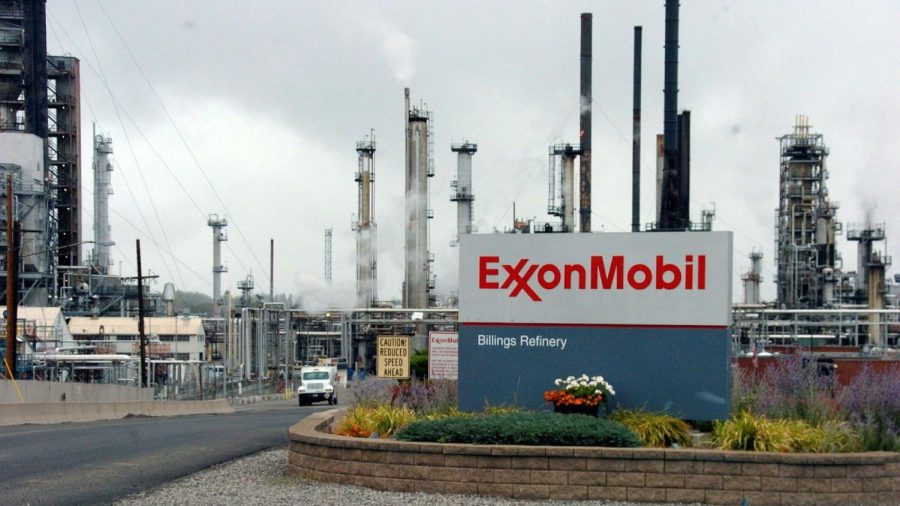Interview with Karlin Nageak Itchoak – Alaska State Director of Wilderness Society on the topic of petroleum mining
May 2, 2022
The following is an interview with Karlin Nageak Itchoak who is the Alaska State Director of the Wilderness Society. The Wilderness Society is an organization that seeks the protection of untouched lands, including the Arctic National Wildlife Refuge. The Arctic National Wildlife Refuge is threatened by oil and gas development. This interview has been transcripted, and has been edited for brevity.
What is the most immediate impact of petroleum mining on the National Wildlife Reserve?
The arctic is ground zero for climate change where the temperatures are rising at twice the rate of the rest of the planet. So, we have indengionious villages and people who live around the area that are experiencing climate change at a rapid rate. The permafrost is melting, the sea-ice extent is melting, and the climate is getting warmer. This is impacting the animals that many indegionius people depend on for their food security. Permafrost melt is making the infrastructure insecure, and food sources are disappearing. So congress really needs to mitigate the climate threats and take legislative action to restore the protections to the Arctic National Wildlife Reserve for good, because if we allow oil and gas development there it will only make the climate crisis worse. So there’s a lot of climate related impacts.
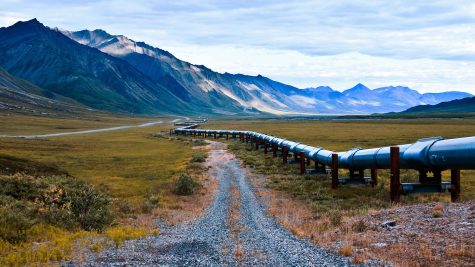
What are some long term effects that petroleum mining could have on the National Wildlife Reserve?
Some of the longer-term effects are exacerbating the climate crisis. We’re seeing some of the most devastating impacts of the climate crisis in the arctic. It’s like what I always say: if there is a building on fire, you don’t put out the fire by starting another fire outside the building. That’s what we would be doing in my mind, because we have the national petroleum reserve, prudhoe bay, and all these other large scale oil and gas development going on next to the refuge. If we were to add drilling in the refuge it will just make the climate crisis worse. That would impact the caribou, the seals, the whales, the walruses, the dall sheeps, the grizzly bears, and all the animals that depend on the refuge. Also, we have birds that migrate to the rescue. There are over 200 birds that migrate from all fifty states to the refuge. So, it could impact bird populations. In addition, the porcupine caribou herd is one of last free roaming caribou herds in the country, and the coastal plain is the sacred calving grounds of the caribou herd. Any petroleum mining or contamination there could severely impact the caribou herd.
What is a great advantage if the leases do not get approved to mine petroleum?
One of the great advantages would be that we would be protecting one of our crown jewels of our national wildlife refuge system. This is one of the largest and most intact wilderness areas and wildlife refuge systems. We have the coastal plain, the Molly Beattie Wilderness, and the arctic national wildlife refuge which is now being managed as wilderness. So protecting this area is critical for the wildlife but also for maintaining the wilderness character of the wildlife refuge. It is also an important place for the indeginous people. It’s a sacred place. It’s a place that has cultural significance. So, that’s advantageous as well [if we protect it]. We’ll be protecting it for seven generations to come, and to make sure that we’ll always have this wild landscape preserved and saved.
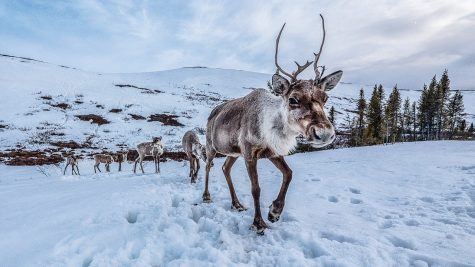
There are currently roadless areas, what would happen if mining took place in roadless areas?
The roadless areas are important because that helps preserve the wilderness character of the area and keep the area pristine, keep the fragile arctic ecosystem intact, and protect the very important biodiversity of the area. By creating roads we will be opening the floodgates to not only the oil and gas industries but to everyone else who wants to come in there. It would be hard to manage that and keep the wilderness character of the area. You could have people come in to hunt and poach animals that would impact the subsistence users in the area that depend on that area. Also building roads on the permafrost in the arctic is a very hard and expensive thing to do. So to do it right would take a lot of time and money. Even when you do it right, there are still severe impacts on the permafrost. The permafrost is such that if you build a road on it it causes a lot of thawing which causes the road to be wavy. You would have to spend a lot of maintenance on it, and having roads in poor condition in the arctic with oil and gas truckers going over them is just a recipe for disaster. We can’t have tankers or support vehicles contaminating the tundra. We can’t have that.
My understanding is that the mining would take place near the coast, how would this impact the surrounding area?
Yes so most of the operations that would take place would be oil and gas development and drilling. This would have a devastating impact on the surrounding areas because of the need to build roads. Not only gravel roads, but also ice roads to move thousands of support equipment. This would also mean support vessels coming into the surrounding area including large industrial ships and boats. So, all this would also require building pipelines, drill rigs, and drilling pads. This will have a devastating impact on the tundra if there is contamination or spills. This will have very bad impacts on the food resources that the caribou depend on, and could contaminate the water too. It’s not good for the tundra either or the surrounding area. It will bring in more people because they need people to run all these rigs. The roads could bring in more tourists, and all that has an impact on the land animals and the people in the area, too.
How has the Wilderness Society been combating the potential petroleum mining?
The wilderness society was founded in 1935, and many of our original founders such as Bob Marshall, Olaus and Mardy Murie, Aldo Leopold, Howard Zahniser, and many others have been fighting the arctic since our inception. The Wilderness Society has had a long history of fighting to protect the arctic. Howard Zahniser helped write the wilderness act. While Mardy and Olaus Murie led many expeditions into the wilderness areas in the refuge area, and really lobbied hard on congress to protect the refuge. So “TWS” (The Wilderness Society) as we call the wilderness society has been instrumental in trying to combat the potential petroleum mining in the refuge since we’ve been created in 1935. We continue to do so. Today, we are a part of a national conservation group called the Arctic Refuge Defense Campaign, and we help to this day trying to keep oil and gas out of the refuge.
If the National Wildlife Reserve transitioned to petroleum mining, what similarities would Prudhoe Bay and the National Wildlife Reserve have?
That’s a great question. Unfortunately some of the similarities would be the large-scale drilling for oil. That means that all the infrastructure that you need to get the oil out of the ground including the drill pads, the pipelines, the staff, and all of these industrial size oil and gas extraction equipment will impact the environment. Also it will impact the subsistence users in the area, because they won’t be able to hunt there since they can’t hunt near pipelines and oil rigs. So they would have to go further to harvest their caribou, sheep, fish, or the animals that they depend on. This would impact the local indeginous people as well. In addition, the other impacts are noise and light pollution, and that impacts the animals. There are these maps of Alaska at night, you can see Anchorage, but you can also see Prudhoe Bay and the NPRE since they are really lit up, because of industrial activity. Also with the oil and gas extraction, they have to do this flaring where they flare off chemicals into the environment. The carbon footprint of the flares will leave a negative impact in the arctic as well, and just increases the climate crisis.
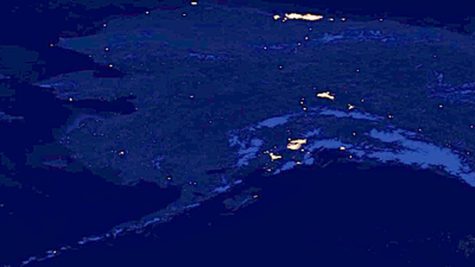
What would you want the average person to know about the mining situation of the National Wildlife Reserve
We want them to know that drilling for oil in a sensitive landscape will compound devastating climate impacts allowing for the exposure of carbon emissions, worsening climate pollution, and harming communities that are bearing the brunt of the climate crisis. I also want people to know that the coastal plain is the sacred calving ground of the porcupine caribou herd on which the indegiouns peoples of the arctic depend on their survival like they have for thousands of years. So these are not uninhabitable areas. These are areas where people live and have been living for thousands of years. With the climate crisis we cannot afford to drill in the arctic refuge and we have to protect this area as one of the last pristine wilderness areas in the United States. We have some of the lasts in this area such as the last denning polar bears, the last large scale caribou herd that are free roaming, large populations of wolverines which are hardly found in the lower 48, grizzly bears, wolves, and 200 species of birds that depend on this area as a livelihood. I would like people to know that even though it seems the arctic refuge is so far from you, where your sitting in the lower 48 or wherever you may be, what happens in the arctic will impact the rest of the world
Is the current administration protecting resources to their best of abilities?
No they are not. Although President Biden suspended leases sold in the refuge, this temporary step is not a solution. The coastal plain remains under threat. The 2017 tax cuts and job act mandates that a second lease sale must be held before the end of Biden’s first term. So congress must act to restore protections to the coastal plains. In addition, there are current opportunities within congress for them to pass the budget reconciliation bill in a way that would protect the refuge. The Biden administration is doing a lot of things to protect the refuge, but there’s still a lot more things that need to be done, and that they can do to ensure that we have long term durable protections for the arctic national wildlife refuge for the next seven generations. We don’t want another Trump-like president to come in and undo those regulations. So, that is why I am saying that they need to do a lot more.
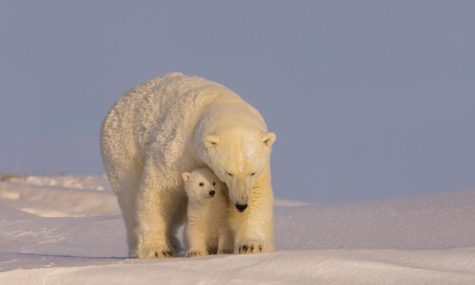
Can you see another Exxonmobil catastrophe happening if petroleum mining does begin?
Yes, absolutely. Even though the oil and gas industry has come a long way in order to protect the environment, and to do things in a better way, trying to do oil and gas development in the arctic is different. It’s more complicated, remote, and under more extreme weather and climate patterns. The chances of another Exxonmobil catastrophe happening in the arctic are too high. The risk is too high. If that did happen we don’t have the resources there to clean it up. Even if we did have the resources, you can never restore it to its original pristine condition it had before. So, we cannot take that chance. Not only would it impact the tundra, but like I said they would need numerous oil and gas support vessels to bring supplies into the arctic to build all the infrastructure. That increased ship traffic brings its own risks, not only if there are oil or diesel gas spills, but they’re big polluters too. They emit heavy diesel fuel that impacts the climate in the arctic. Also their bilge water discharge can impact the fragile marine ecosystem. It could kill the krill that our whales depend on. It could increase the water temperature and kill the fish. It is not just about oil and gas pollution, but all of the impacts that these large scale ships will have. We know that the increased shipping can impact the whale’s ability to migrate. There are so many problems with that, that I don’t know where to begin.
Below is a survey. Please fill it out if you have an opportunity to do so. Youth the ages of (16-18) should fill out this survey.
